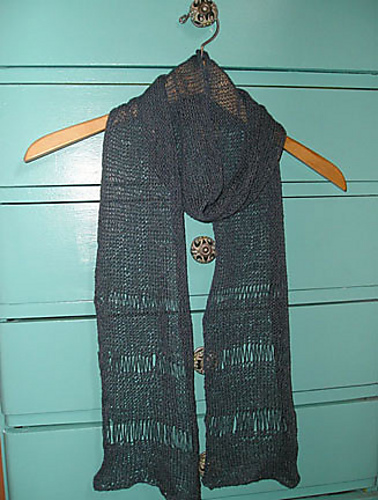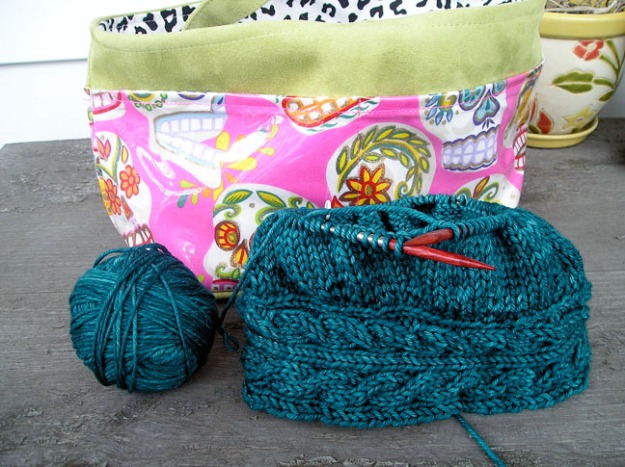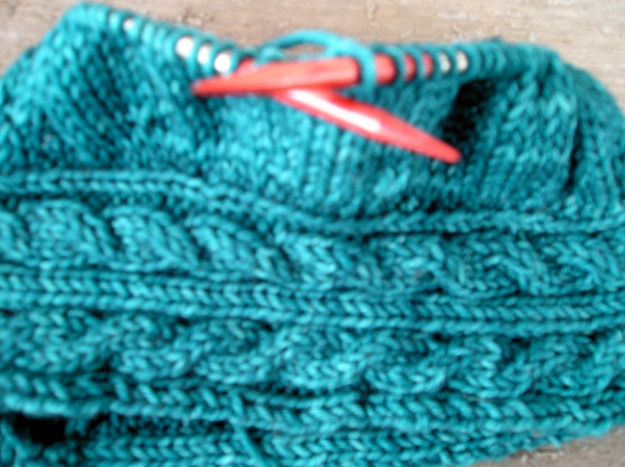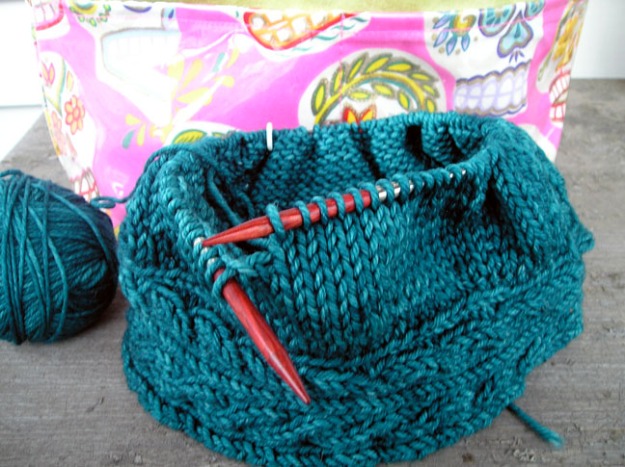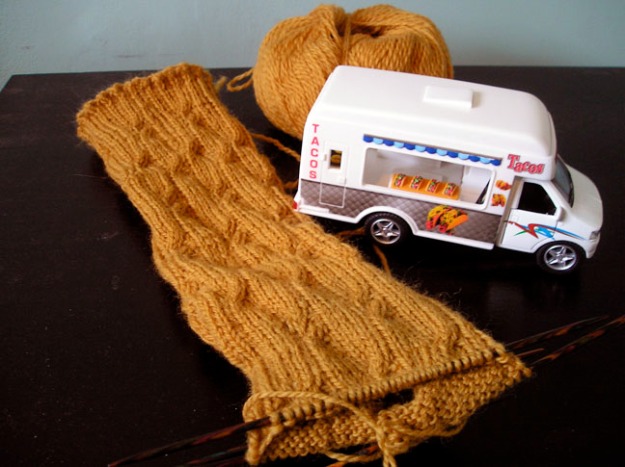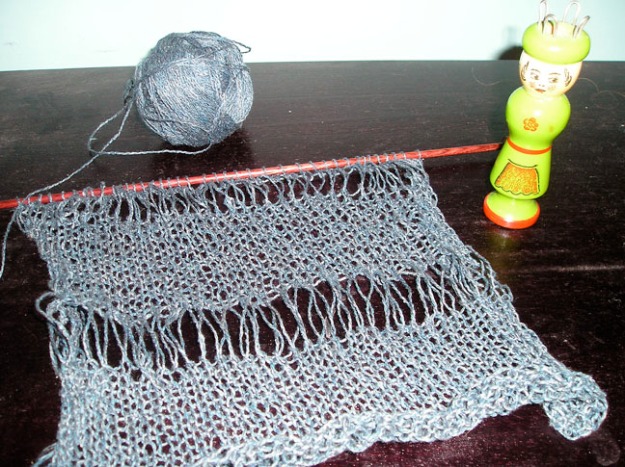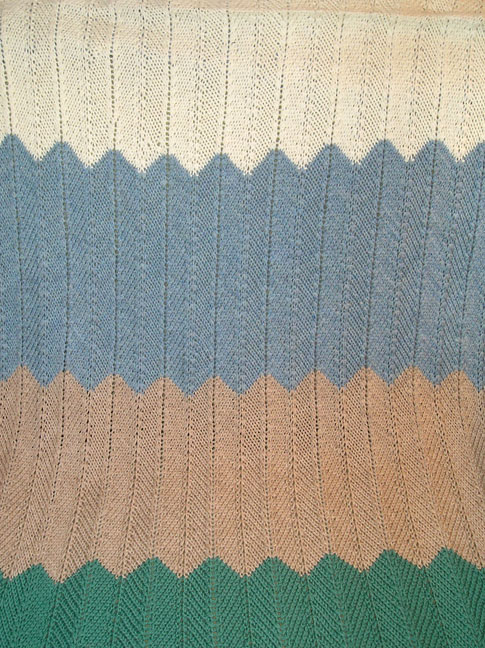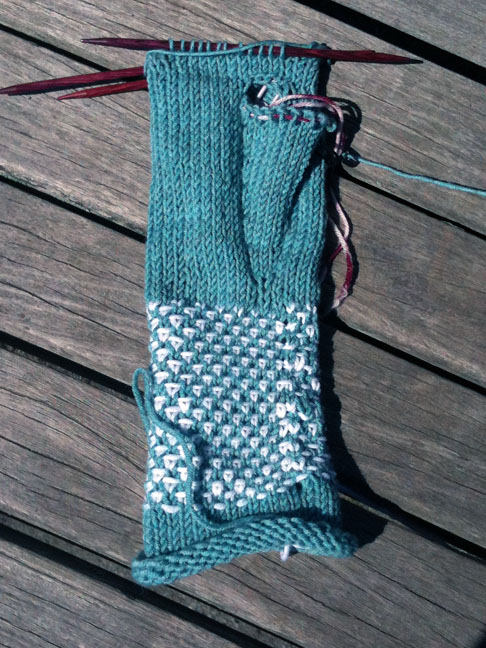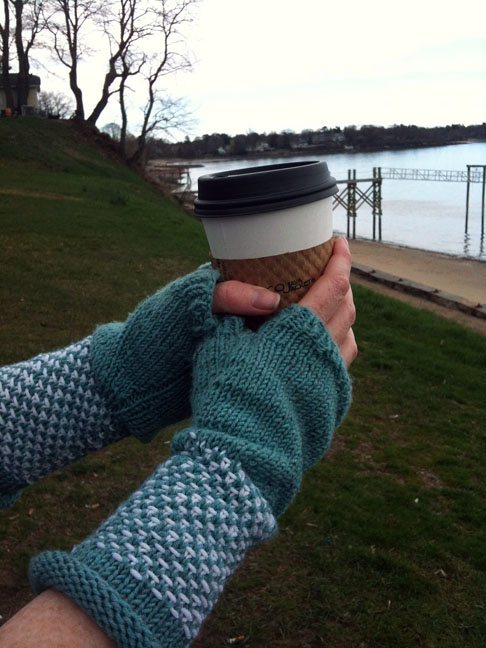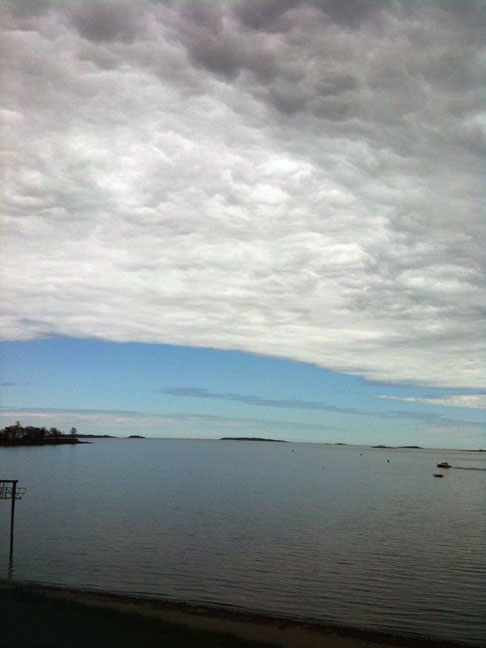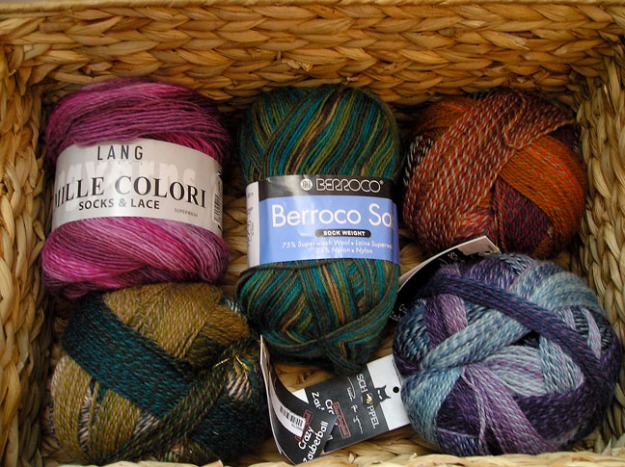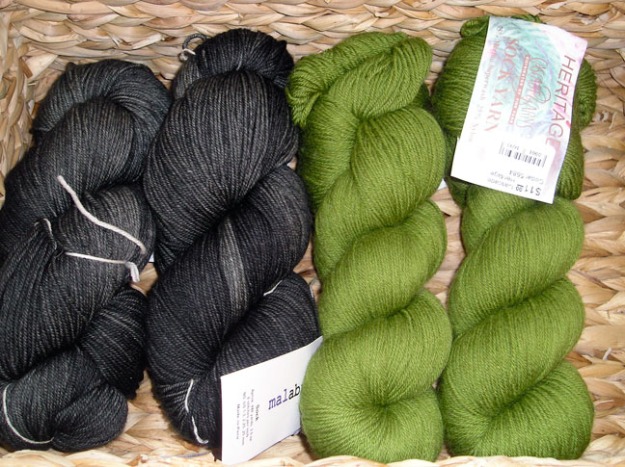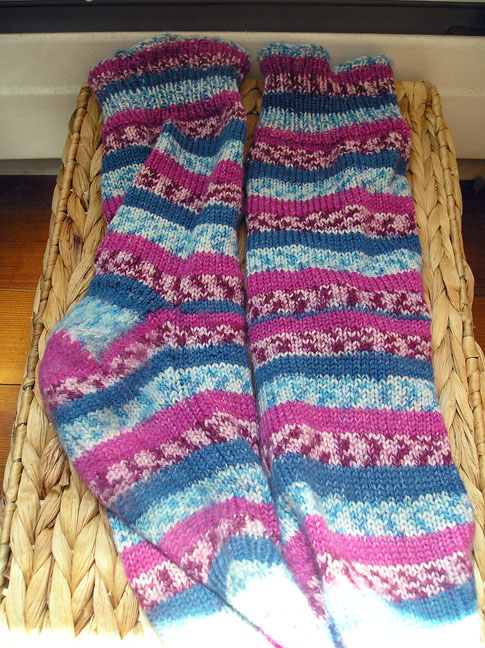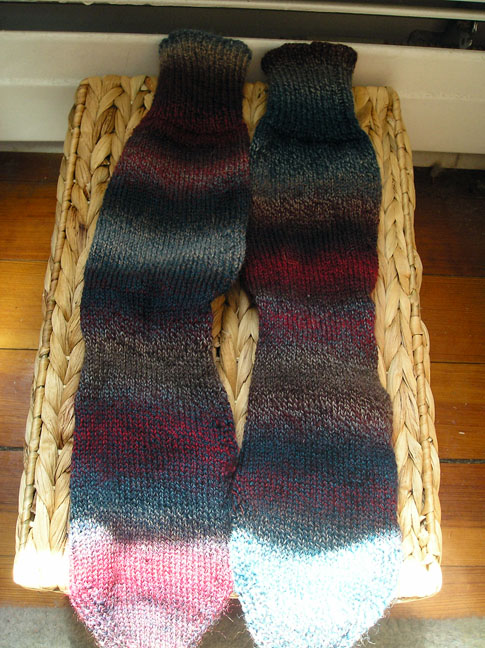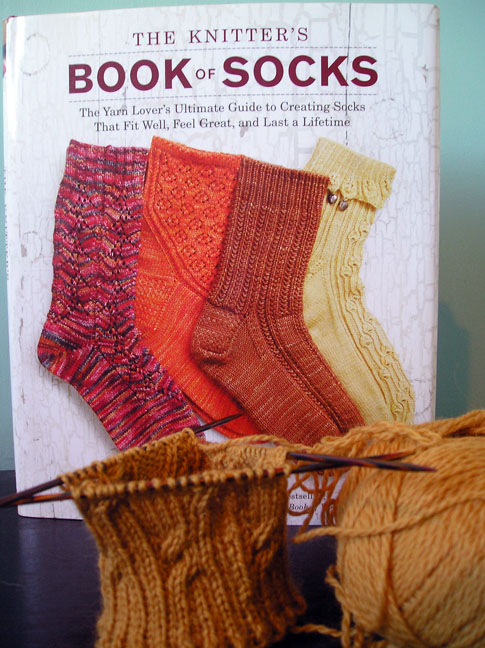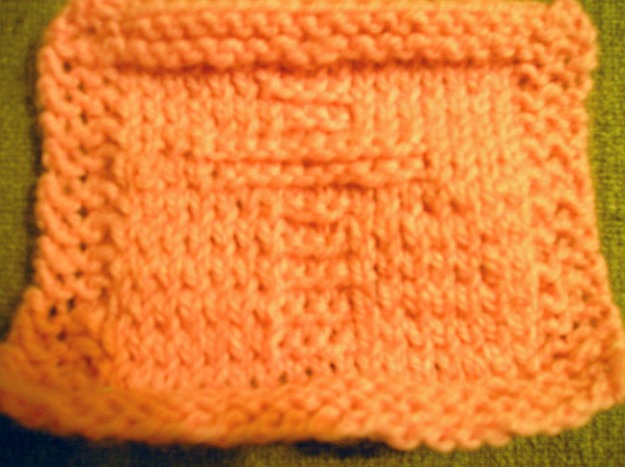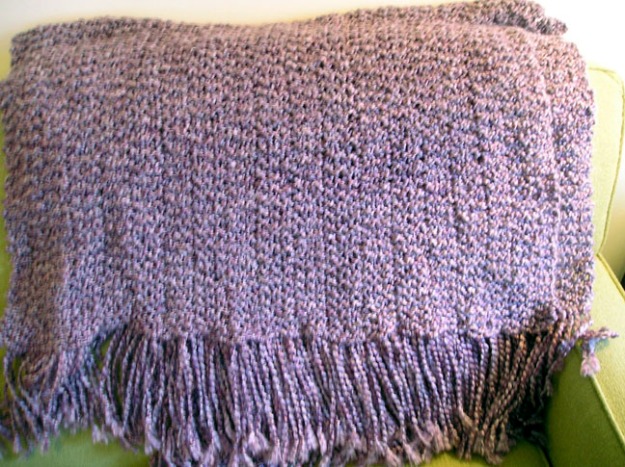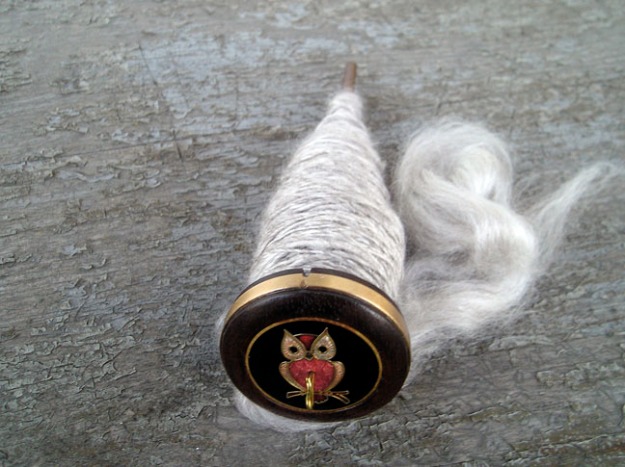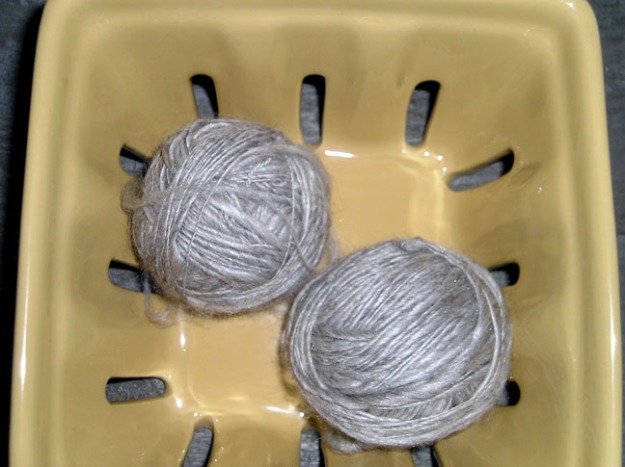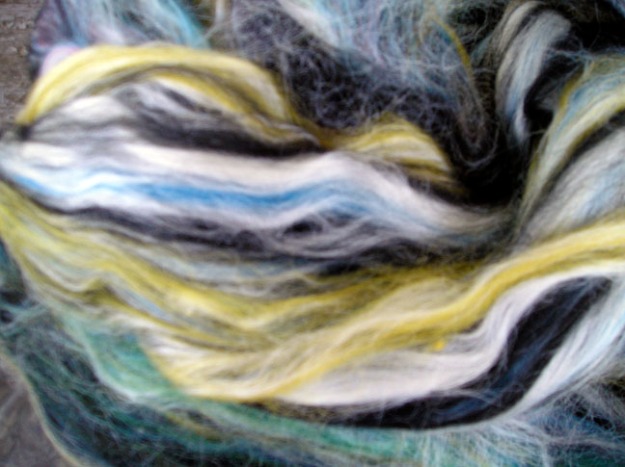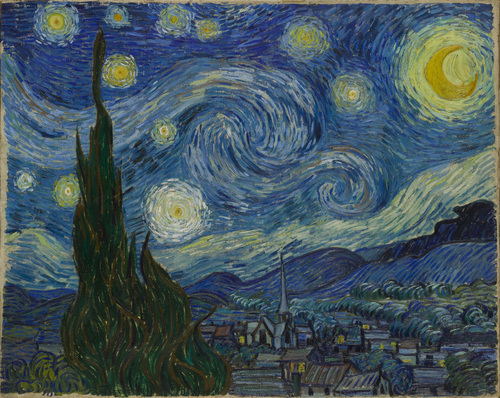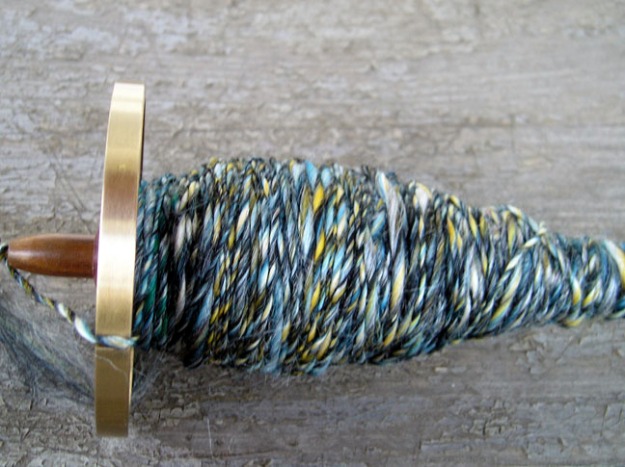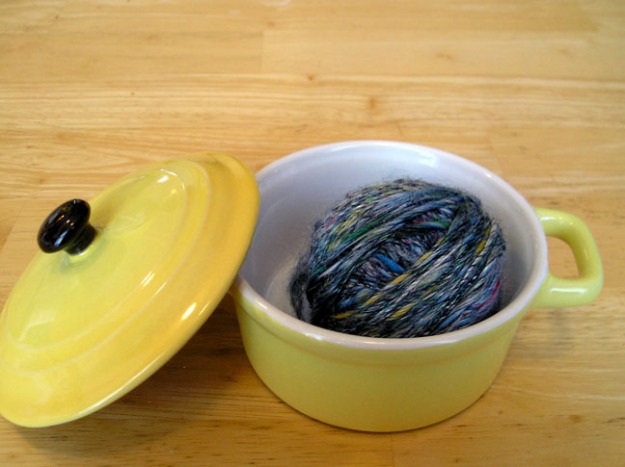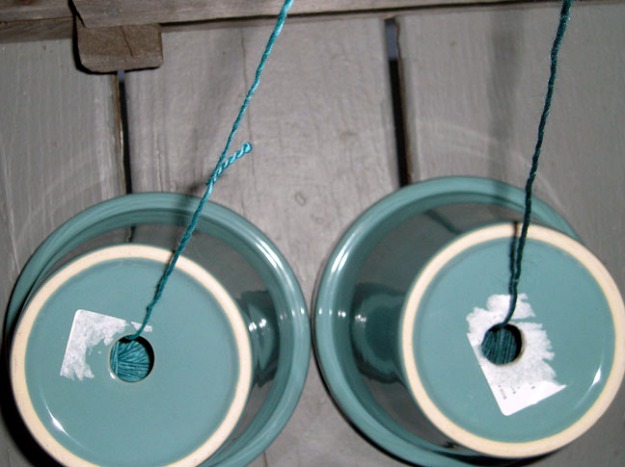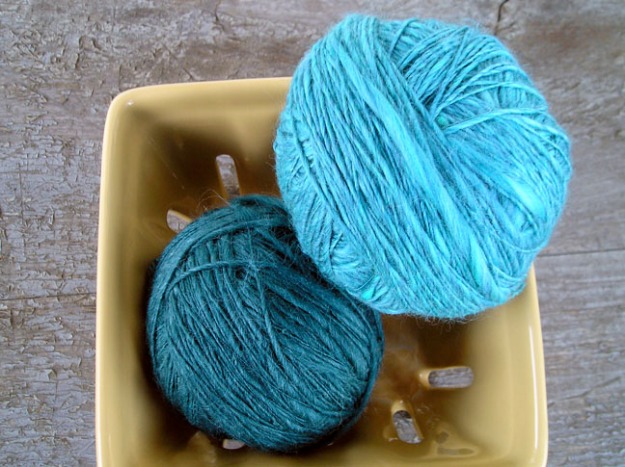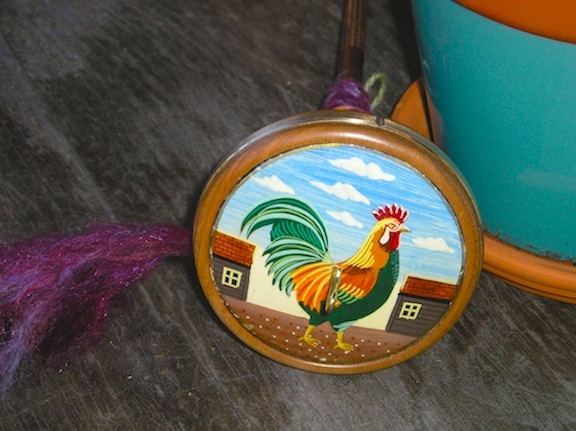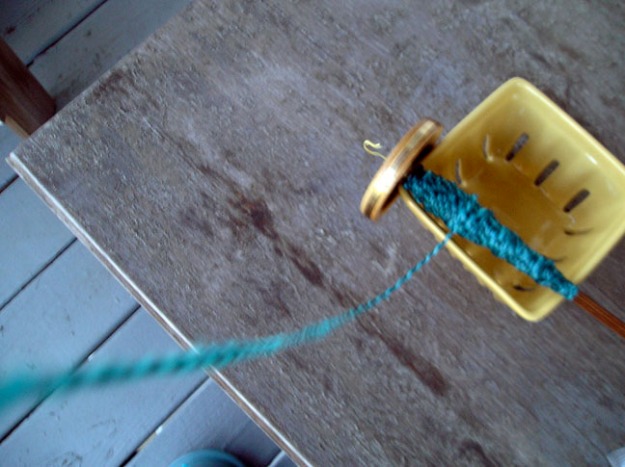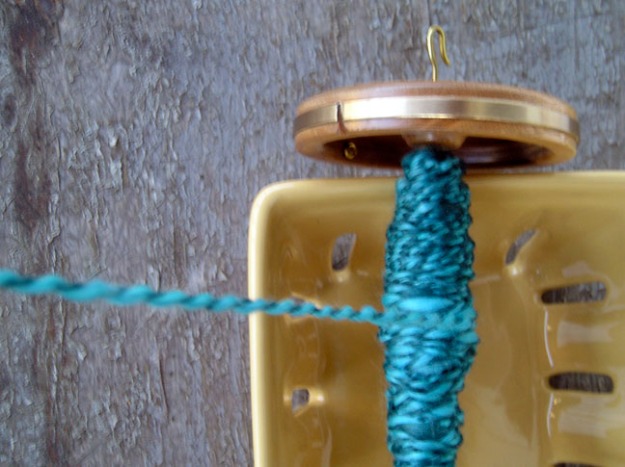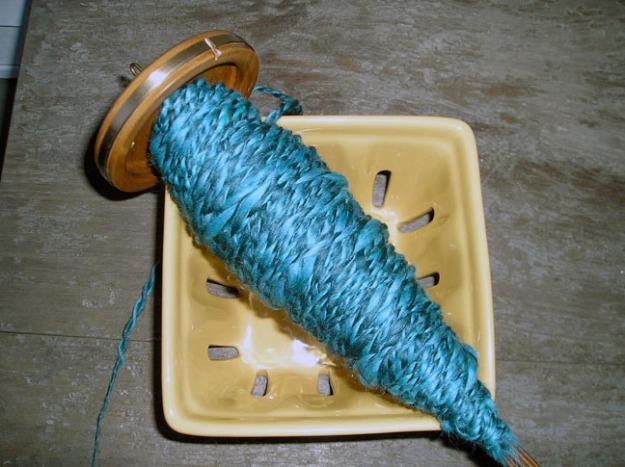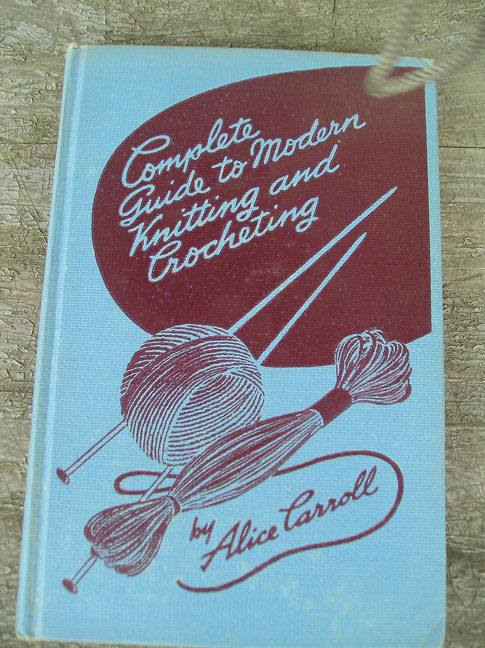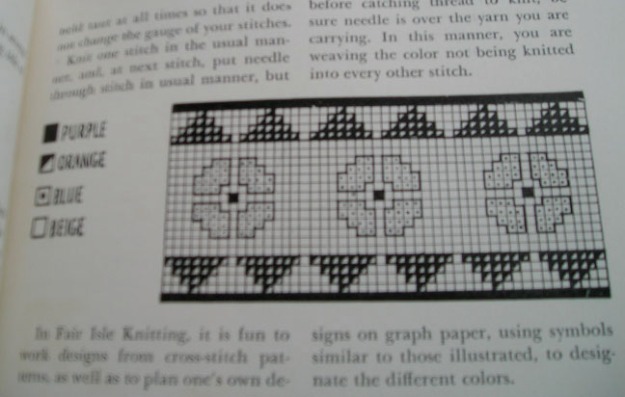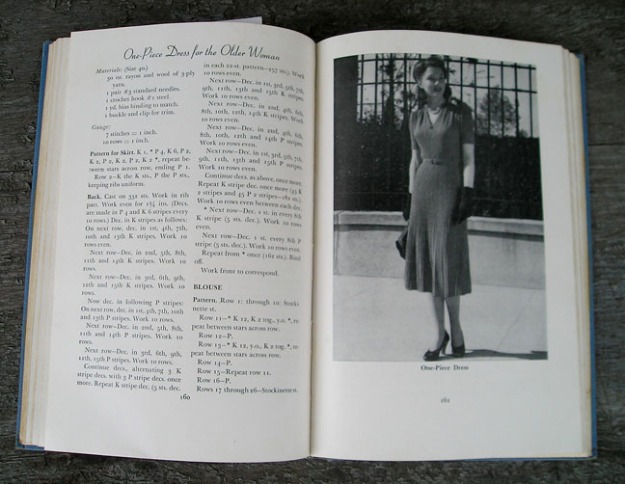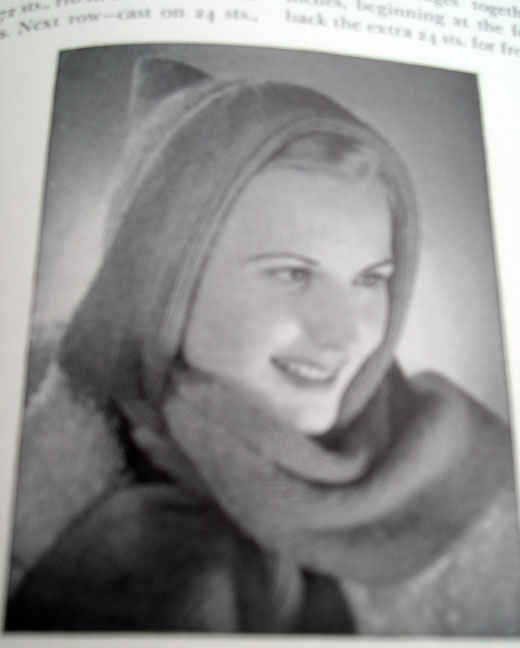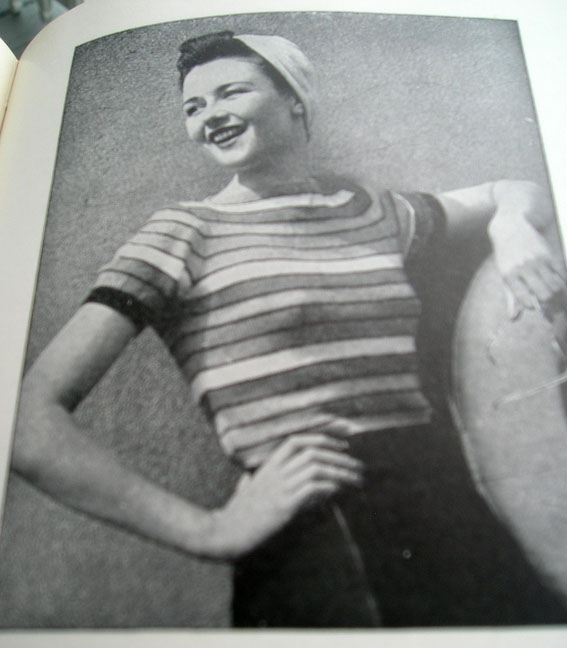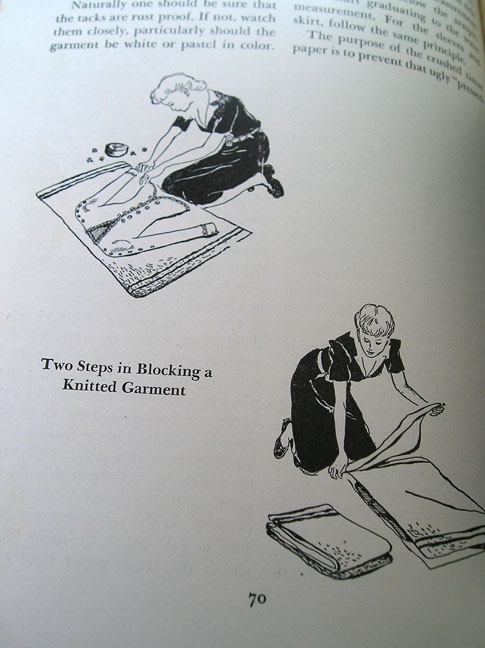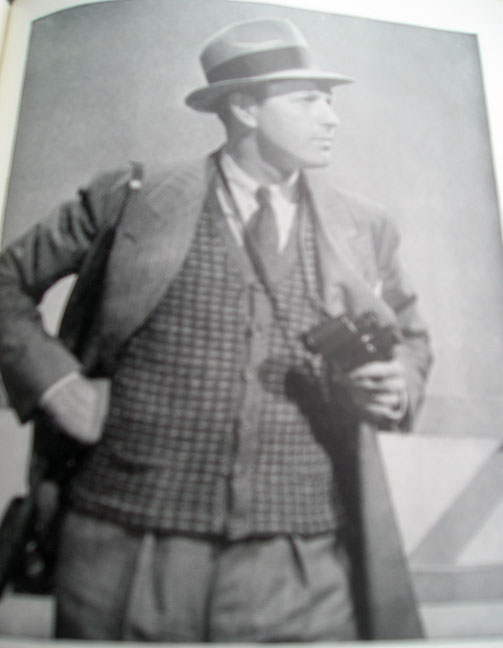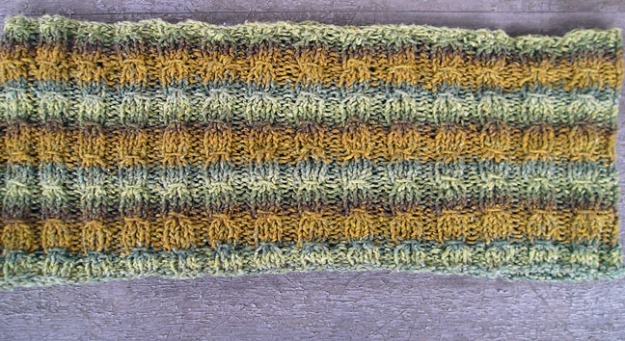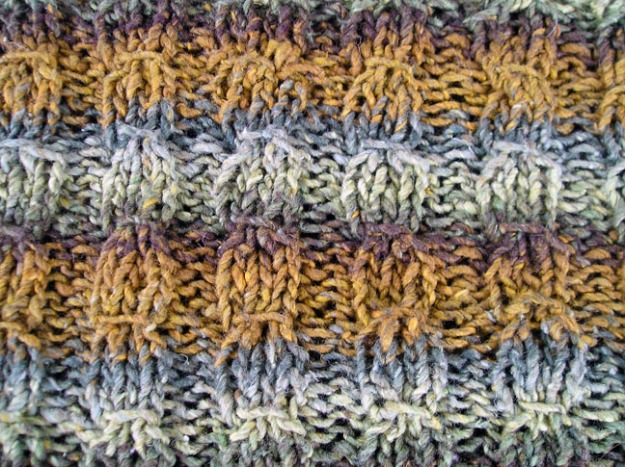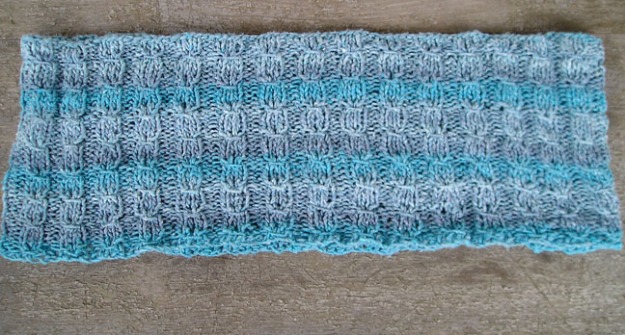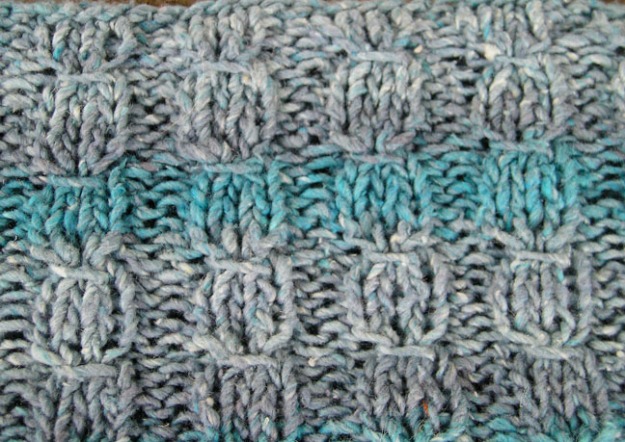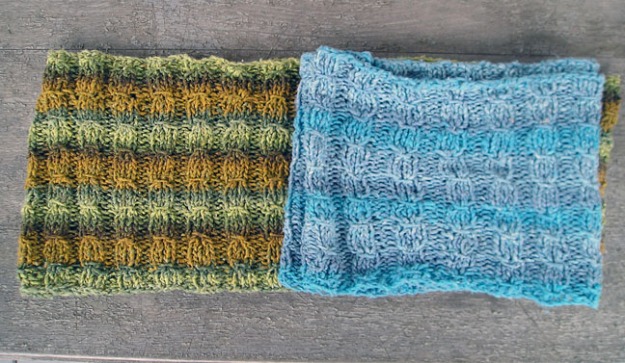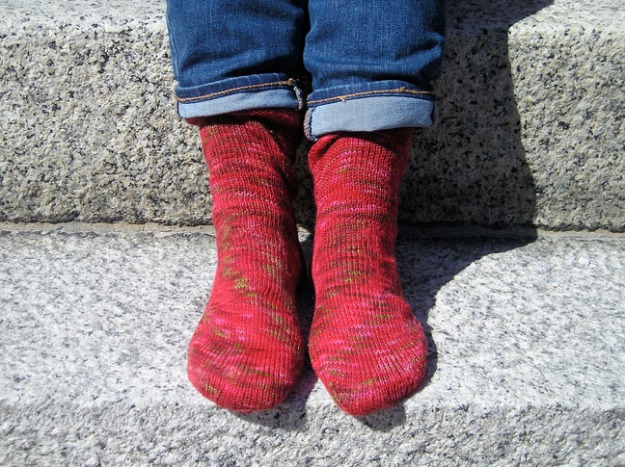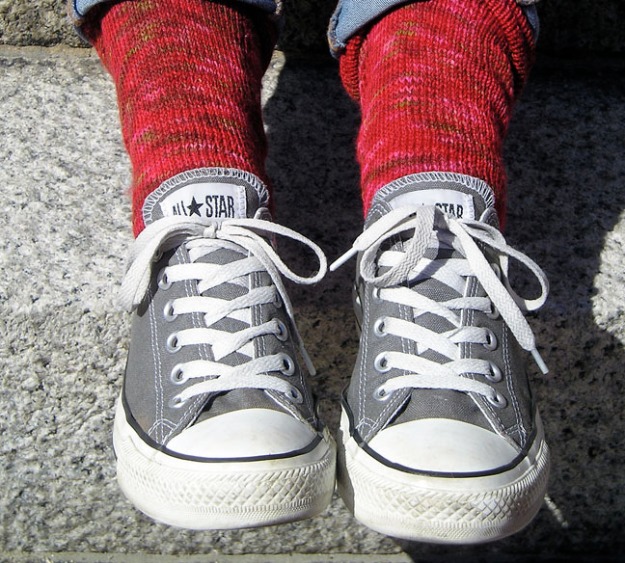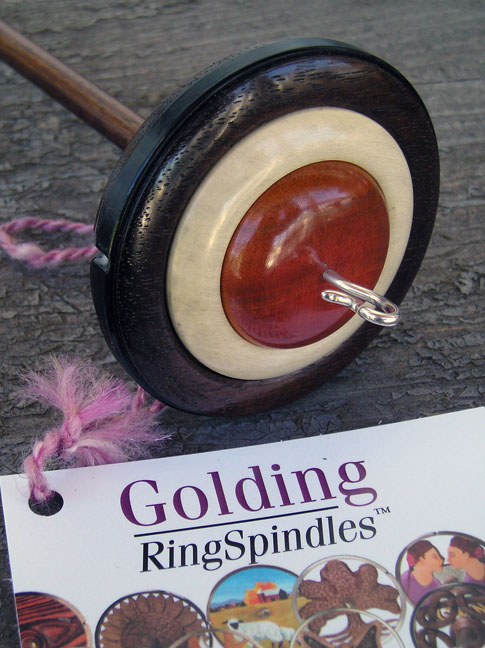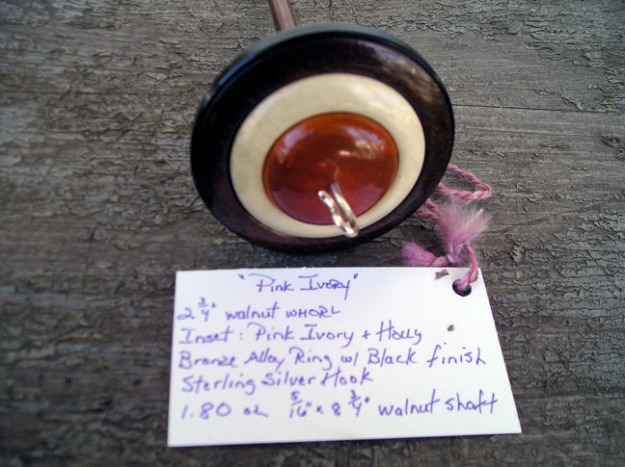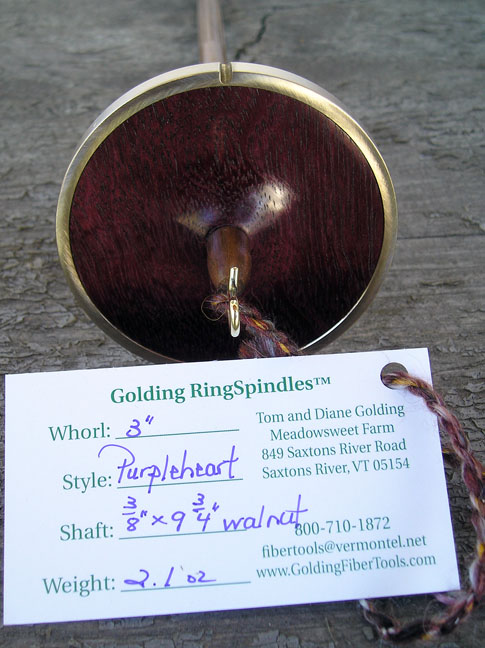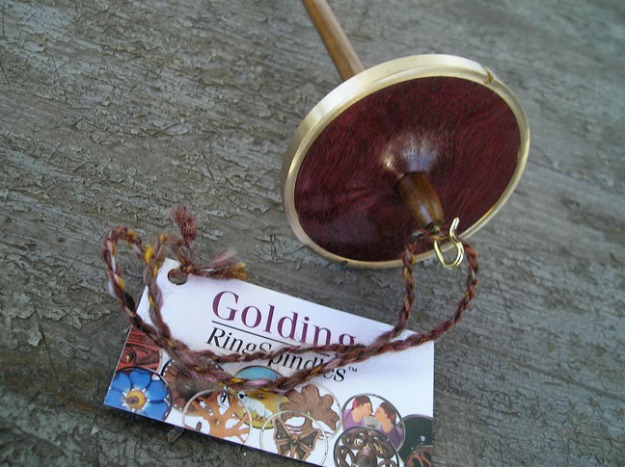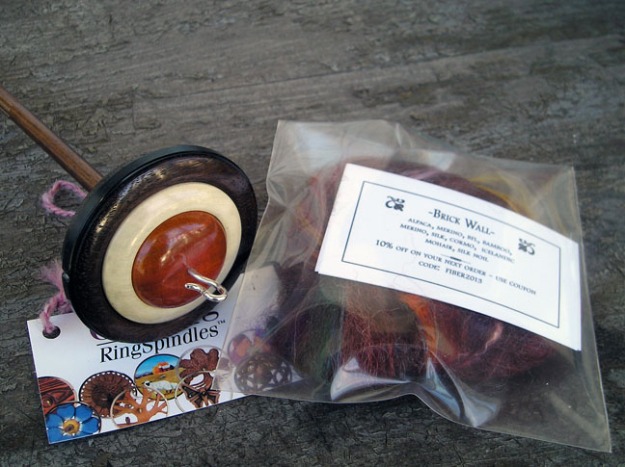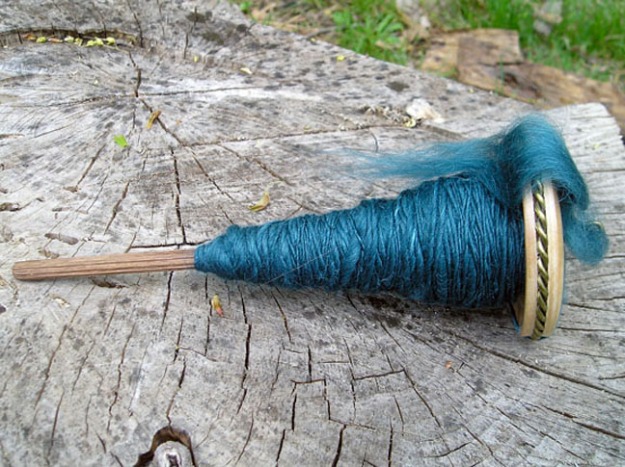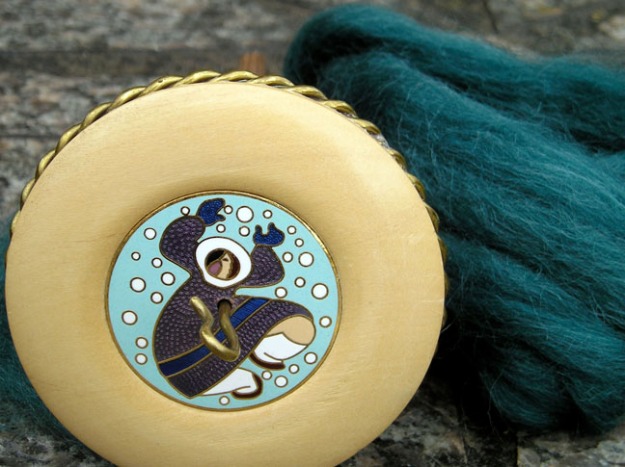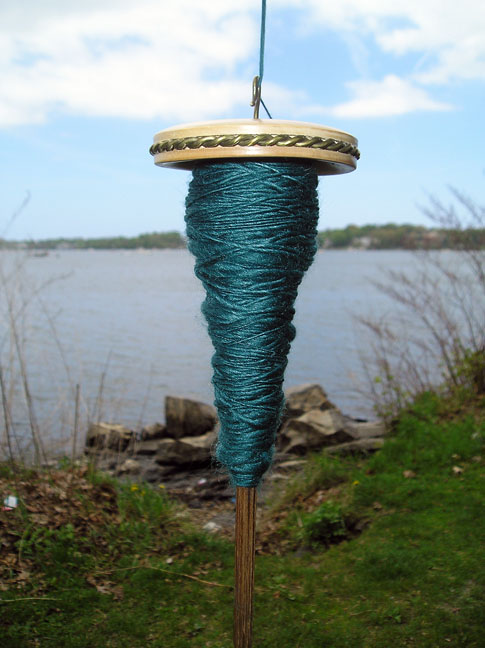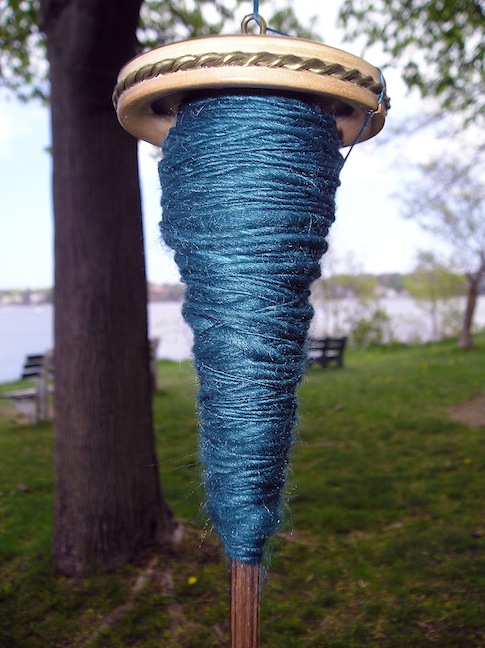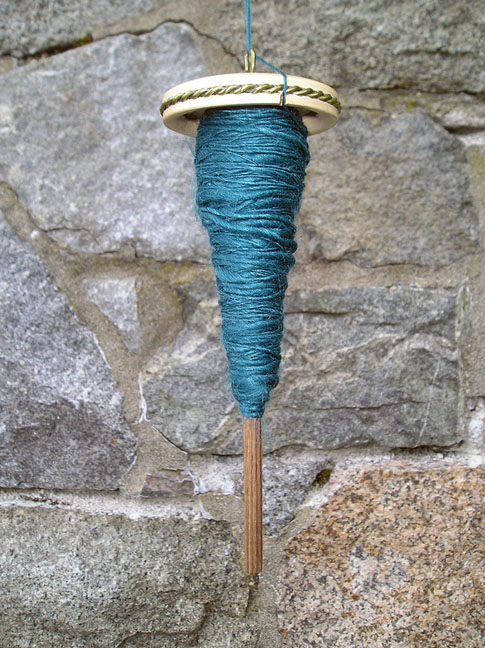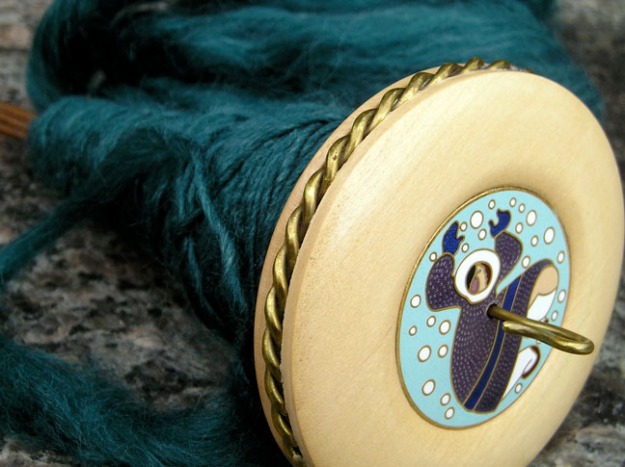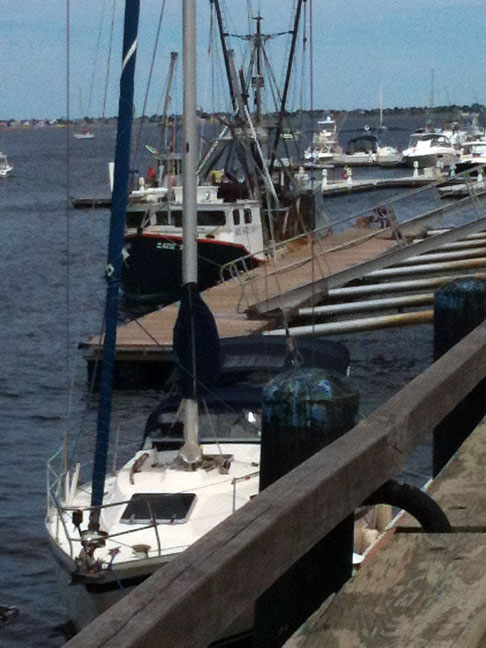
Yesterday I spent the day in Newburyport. The humidity has let up for the time being and I figured the temperature would be nice and cool down by the waterfront, so my sister and I drove up for a day. It was the perfect day to eat, shop and relax by the Merrimack River. We shopped, walked through some of the older streets to view the beautiful 18th- and 19th-century houses, and we ate popsicles on a bench overlooking the river. Newburyport is one of my favorite places to spend the day, and I mention it frequently on this blog. Yesterday I didn’t have any particular goals in mind other than stopping into Newburyport’s LYS, A Loom With A View, for some sock yarn. It turned out to be a day filled with, to say the least, unexpected fibery finds.
Our first stop was the antiques warehouse Oldies, which is never dull and always full of surprises. There is a vintage clothing section that often has a lot of old sewing and knitting things on the shelves, so I ventured into that room first. There were several pairs of old steel knitting needles, small cones of thread, and a lot of darning eggs. There were also three nearly identical rough wooden Russian-style support spindles.
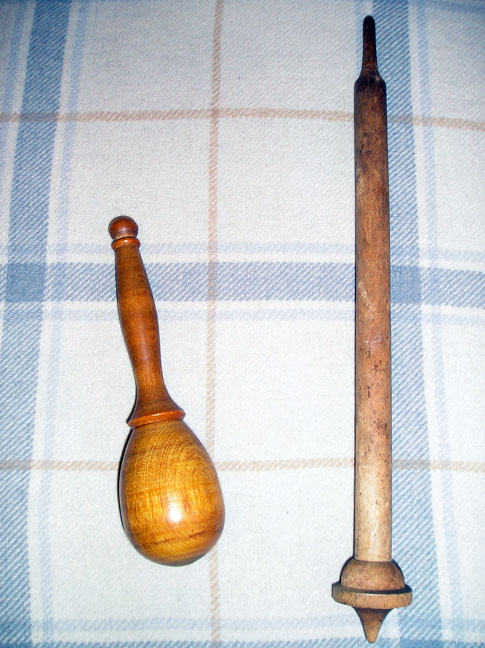
Has anyone ever seen a spindle like this? It’s very plain, and it’s certainly seen some use.
They were $5 each. I picked out the one I wanted and gave it a twirl on a countertop. It had a pretty decent spin. Satisfied, I decided I would buy it. A nearby dealer was watching me.
Seller: Have you figured out what that is? I thought it was some sort of knitting needle.
Me: I believe it’s a support spindle for spinning yarn.
Seller: You could be right. The vendor put her initials and the price on it but didn’t tell us what it is.
I give it another twirl
Seller: Whatever it is, it’s only five dollars.
Me: O.K. I’ll take it home and try to spin yarn with it and see what happens.
Seller: That-a girl!
I really do love the salespeople at Oldies because they’re lovely people, and they love what they do. The lady at the register called it a “spool” for making yarn.
Let’s take a look at it:
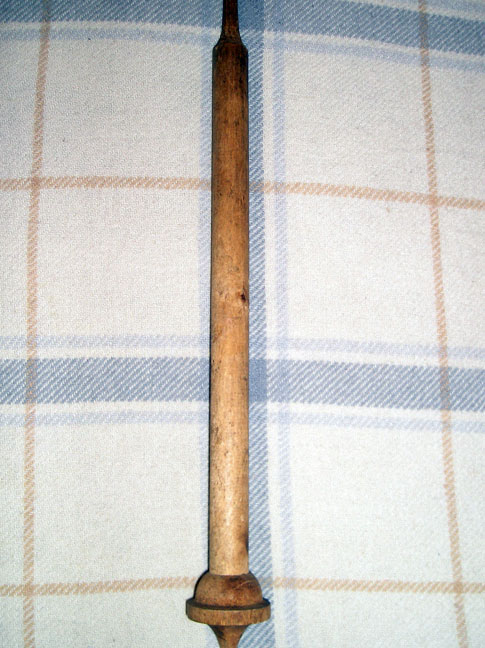
It actually has a nice, tapered top, the better to grip it in order to spin the spindle. I think that’s pretty clever! It’s not fancy, but the little ball and disk detailing above the tip is a nice little touch. It’s definitely hand carved. The wood is aged but still smooth. The saleslady couldn’t say for sure how old it was, but her best guess was that it, along with the darning egg, was from the 1940s or 1950s. Here’s a close up of the tip:
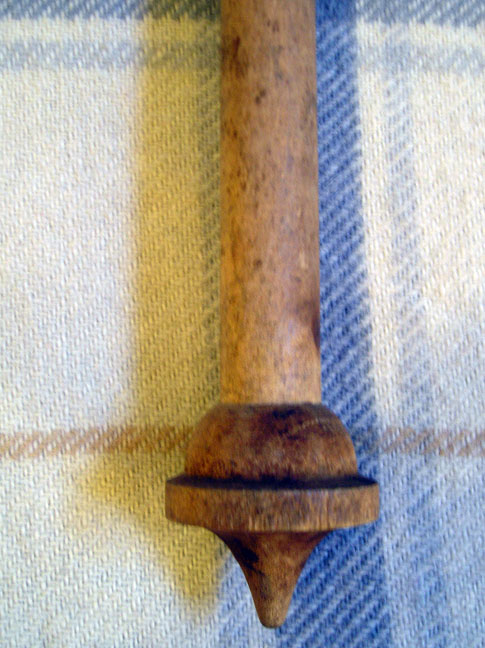
I’m no expert but I think the spindle might be older than that, because t’s so plain and utilitarian, like someone literally did not care what it looked like because they just needed it to function. It’s hand-carved. It looks very aged to me. This is a tool, and no one obsessed over what kind of wood they wanted, or what color stone or crystal to put above the tip. We’re so spoiled for choice these days, when we are spinning for fun, and not for a do-or-die need to put clothes on our backs. And people certainly didn’t pounce on spindle makers as soon as their shops opened because the newly made spindles were going to sell out in a ridiculously short amount of time. Man, how times have changed. I bet the woman who used this spindle would laugh and shake her head if she saw what some of us go through today when we stalk online shops for a chance to buy a handmade spindle or join a hand-dyed fiber club!
It’s going to be awhile before I get some usable yarn from this spindle. I’m still trying to get the hang of support spindling, and I need a lot of practice. But I look forward to using this spindle in my efforts. I like the idea of using an antique tool for an ancient process.
According to the saleslady, the darning egg is also from the 1940s or 1950s. Again, I’m no expert, but I would believe that. The egg seems a little more sophisticated than the spindle, which adds to my belief that the spindle may be older.
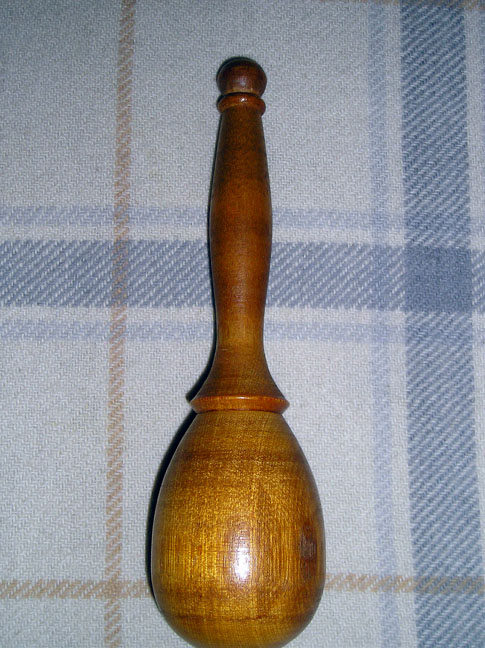
Despite its age, the egg is still in great shape and very pretty to look at. It’s very smooth and pleasing to handle. it’s also very glossy. Look at the beautiful grain. The Forties or Fifties makes more sense to me for the egg because, apart from hobbyists, I don’t know how common it was at that point for women to still be spinning yarn on hand spindles. But women were definitely still hand knitting (and repairing) socks–especially during the war. Sock-darning is an as-yet untried experience for me, but it’s a skill I want to learn. The egg was $12, and is in excellent condition.
My next stop was my favorite bookstore, Jabberwocky Books. Their crafts section is tiny but the few craft books they stock are always thoughtfully chosen. I was surprised to see four books on spinning, and almost bought the Tiny Owls Woodland Knit book, but I put it back for another day. Because you can’t beat this price:
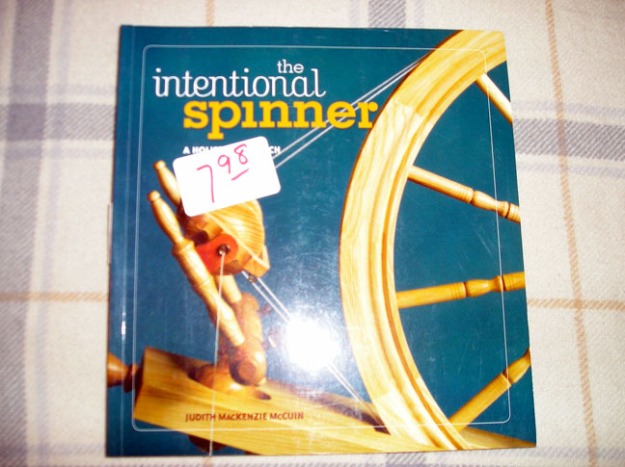
Now compare it to the original price:
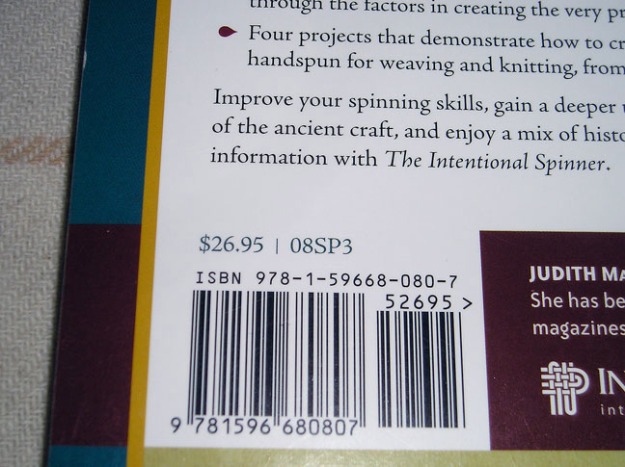
I can’t believe no one wanted this book, and that makes me sad. But on the other hand, markdown! Woo-hoo for me! I took it to the cashier.
Me: I can’t believe no one wanted this book.
Salesguy: You want that book.
Me. This is true. I’ve been meaning to buy it for a long time.
Salesguy: And now it’s yours for $7.98! Do you know how to spin?
Me: Yes.
Salesguy: Good for you!
Clearly this was the tone of the day. *eyeroll*
I also picked up the most adorable knitting reference book ever!
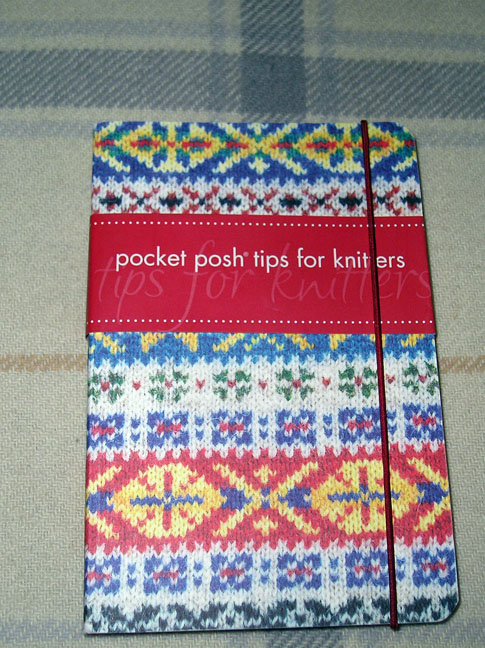
It’s 4″ x 6″ and costs $7.99. It’s thin and light and perfectly portable.

Wait! What’s that bright green bag next to the ball of Zauberball? Why, that’s Loom With A View’s signature green, of course.
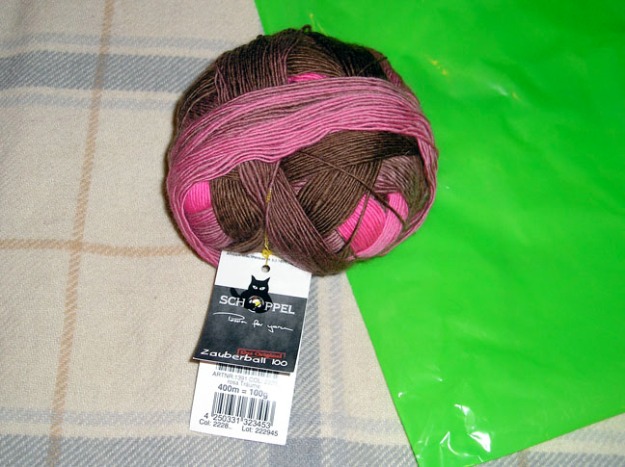
I went into LWAV with the specific goal of buying some pink and brown sock yarn. I saw some socks on Ravelry in this colorway and wanted to make some, too. Pink and brown together is one of my favorite color combinations. I didn’t know which yarn companies made this colorway, but I thought to myself, “It would be nice if I could find it in Zauberball.” There was a nice variety of Zauberball, but I didn’t see my colorway. I didn’t know if it existed but I was determined to look through every color just to make sure. I reached out to the very back of the cubby when lo and behold, I pulled out a ball of pink and brown! In Zauberball. Like I imagined in my head. Something I imagined but wasn’t sure existed, existed exactly as i imagined. Spooky, right?! Chalk it up to one expected fibery find!
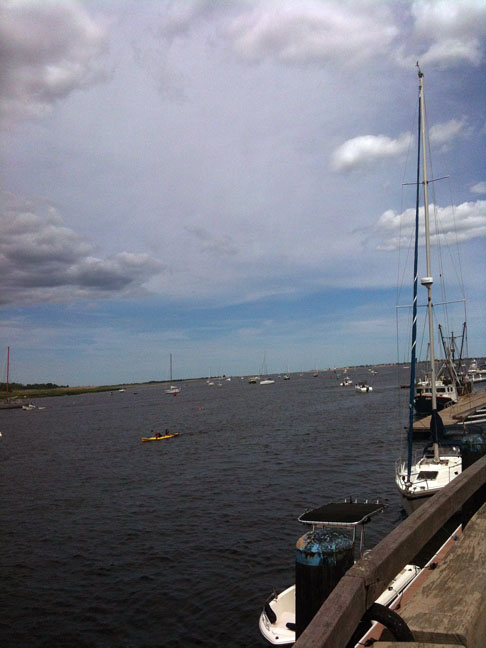
Now let me share with you the most surprising fibery find of the day: a sheep hanging out in the middle of town. My sister and I were walking through the beautiful waterfront park when my sister points towards the distance and says to me, “That lady is walking a sheep on a leash!” As you can imagine, I asked her to repeat that. She did. I really wanted to see a sheep on a leash, so we walked towards it. There were two ladies sitting on the grass. There was a big black dog, maybe a Great Dane, on one leash, and, sure enough, a sheep on the other. I approached the lady holding the leash.
Me: Do you keep your sheep as a pet or for the fleece?
Sheepmom: Both!
Me: What breed is she?
Sheepmom: She’s three-quarter Leicester and one-quarter Romney.
Me: Can I take her picture?
Sheepmom Sure. You can pet her if you want.
I did want to pet her. She let me, and gave a contented little Baa-aaa when I patted her on the head!
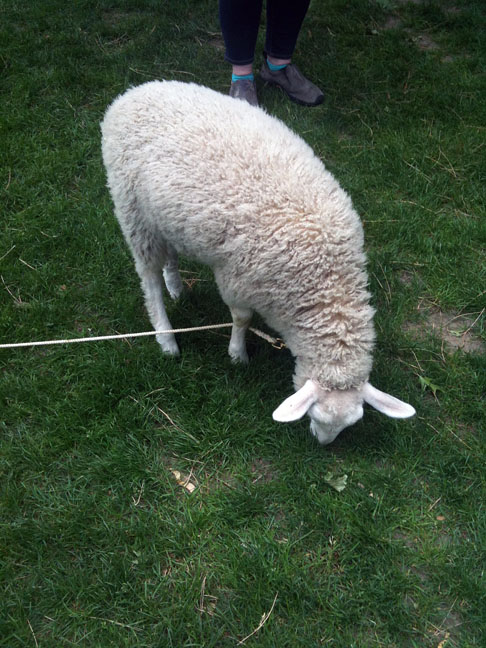
But she put her head down and went back to grazing when I took her picture!
Later, my sister and I spotted this sheep and her entourage crossing State Street in the middle of downtown. They were in a pedestrian crossing with a city bus waiting for them. I bet the bus driver got a bit of a shock.
I could see people stopping and snapping pictures with their phones (not one person was taking a picture with a camera).
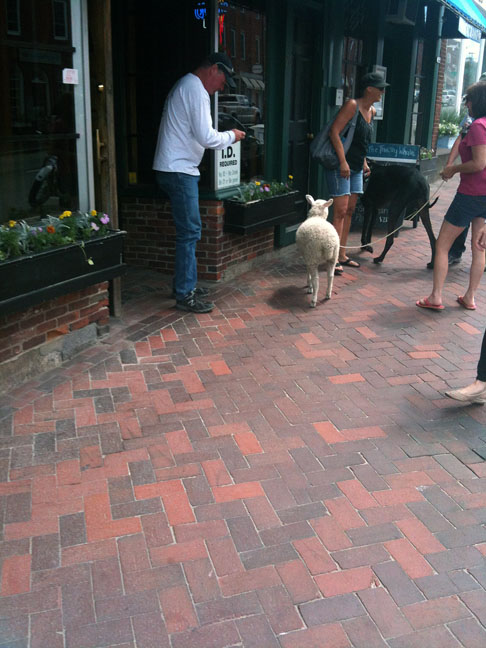
It just goes to show you: people love sheep. See the dog and the sheep together? They appeared to get along. I wonder if the dog thinks the sheep is just another dog, and the sheep thinks the dog is just another sheep.
Then the sheep began eating the flowers out of the restaurant’s flowerbox.
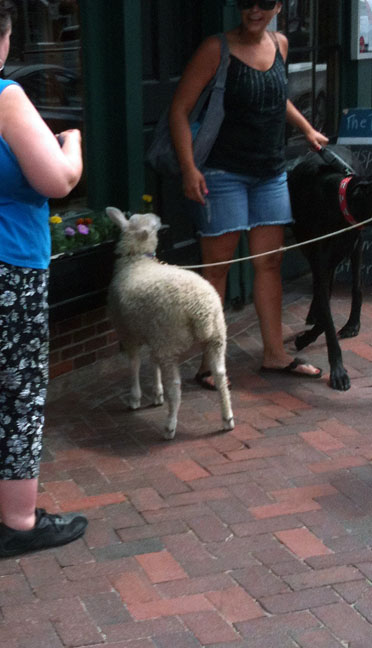
Everybody laughed, and that was when I realized that the crowd around them had grown, full of people eager to take a look at a sheep being walked on a leash in the middle of town, and to take her picture.
I bet that happens to them a lot.
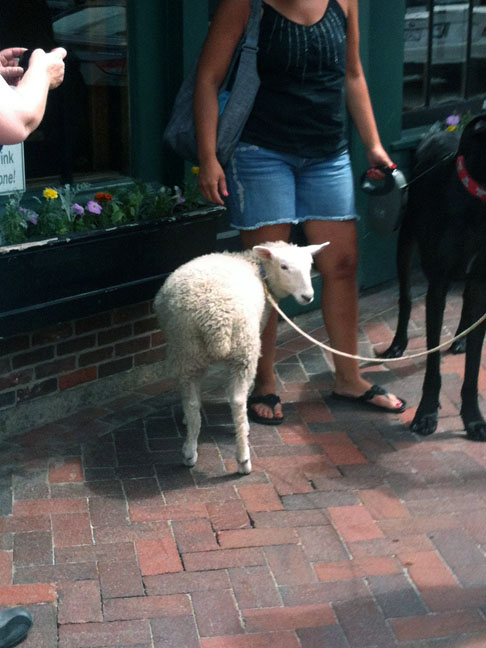
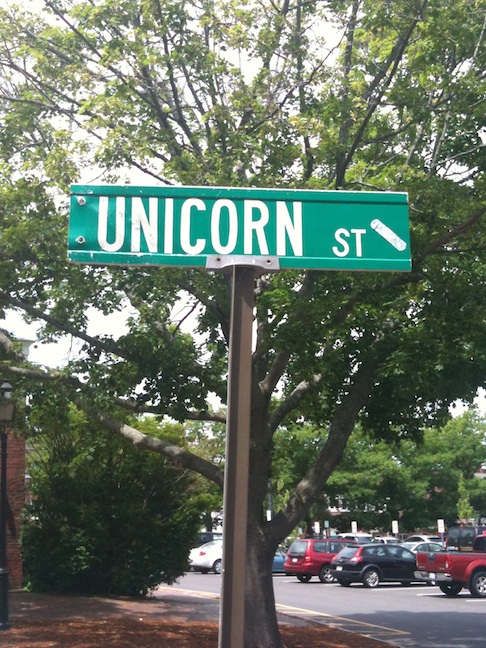
Best street name ever!

